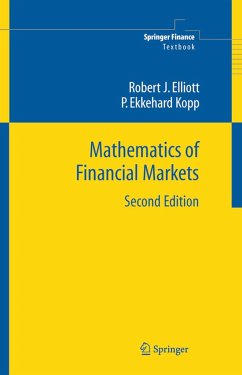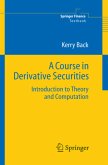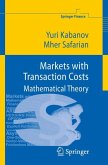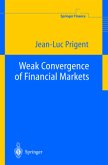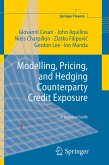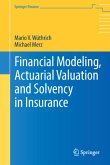This book presents the mathematics that underpins pricing models for derivative securities in modern financial markets, such as options, futures and swaps. This new edition adds substantial material from current areas of active research, such as coherent risk measures with applications to hedging, the arbitrage interval for incomplete discrete-time markets, and risk and return and sensitivity analysis for the Black-Scholes model.
This work is aimed at an audience with a sound mathematical background wishing to learn about the rapidly expanding ?eld of mathematical ?nance. Its content is suitable particularly for graduate students in mathematics who have a background in measure theory and probability. The emphasis throughout is on developing the mathematical concepts required for the theory within the context of their application. No attempt is made to cover the bewildering variety of novel (or 'exotic') ?nancial - struments that now appear on the derivatives markets; the focus throu- out remains on a rigorous development of the more basic options that lie at the heart of the remarkable range of current applications of martingale theory to ?nancial markets. The ?rst ?ve chapters present the theory in a discrete-time framework. Stochastic calculus is not required, and this material should be accessible to anyone familiar with elementary probability theory and linear algebra. The basic idea of pricing by arbitrage (or, rather, by non-arbitrage) is presented in Chapter 1. The unique price for a European option in a single-period binomial model is given and then extended to multi-period binomial models. Chapter 2 introduces the idea of a martingale measure for price processes. Following a discussion of the use of self-?nancing tr- ing strategies to hedge against trading risk, it is shown how options can be priced using an equivalent measure for which the discounted price p- cess is a martingale.
Hinweis: Dieser Artikel kann nur an eine deutsche Lieferadresse ausgeliefert werden.
This work is aimed at an audience with a sound mathematical background wishing to learn about the rapidly expanding ?eld of mathematical ?nance. Its content is suitable particularly for graduate students in mathematics who have a background in measure theory and probability. The emphasis throughout is on developing the mathematical concepts required for the theory within the context of their application. No attempt is made to cover the bewildering variety of novel (or 'exotic') ?nancial - struments that now appear on the derivatives markets; the focus throu- out remains on a rigorous development of the more basic options that lie at the heart of the remarkable range of current applications of martingale theory to ?nancial markets. The ?rst ?ve chapters present the theory in a discrete-time framework. Stochastic calculus is not required, and this material should be accessible to anyone familiar with elementary probability theory and linear algebra. The basic idea of pricing by arbitrage (or, rather, by non-arbitrage) is presented in Chapter 1. The unique price for a European option in a single-period binomial model is given and then extended to multi-period binomial models. Chapter 2 introduces the idea of a martingale measure for price processes. Following a discussion of the use of self-?nancing tr- ing strategies to hedge against trading risk, it is shown how options can be priced using an equivalent measure for which the discounted price p- cess is a martingale.
Hinweis: Dieser Artikel kann nur an eine deutsche Lieferadresse ausgeliefert werden.
From the reviews: "...This book is a valuable addition to a graduate student's reference collection. The number of textbooks in mathematical finance is increasing much faster than the number of revolutionary contributions to the field, but this text stands above the crowd." SIAM Review, December 2005 From the reviews of the second edition: "The book is very carefully formatted. ... this book is a valuable addition to a graduate student's reference collection. The number of textbooks in mathematical finance is increasing much faster than the number of revolutionary contributions to the field, but this text stands above the crowd." (Alexandre D'Aspremont, SIAM Reviews, December, 2005) "The emphasis of the first edition of this book was on developing the mathematical concepts for the rapidly expanding field of mathematical finance. This second edition contains a significant number of changes and additions ... . The target audience is readers with sound mathematical background on elementary concepts from measure-theoretic probability ... . It should be an equally valuable resource to practitioners interested in the mathematical tools ... . will be a very useful addition to any scholarly library." (Theofanis Sapatinas, Journal of Applied Sciences, Vol. 32 (6), 2005) "The second edition adds new matieral from current active research areas. A new chapter on coherent risk measures for instance reflects the recent trend in research and applications in the area of risk management. In summary, this is an excellent textbook in mathematical finance, and I can definitely recommend it." (S. Peng, Short Book Reviews of the ISI, June 2006)

